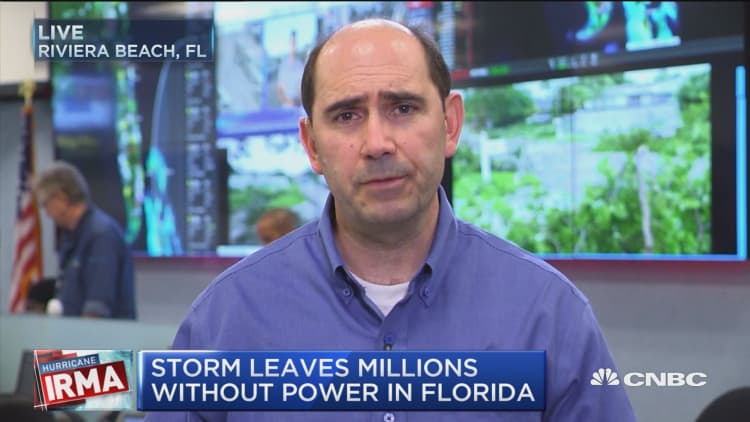Oil prices rose on Tuesday after OPEC said its output fell in August and forecast higher demand in 2018, indicating its production-cutting deal with non-member countries is helping to tackle a supply glut.
In its monthly report the Organization of the Petroleum Exporting Countries also said the two hurricanes that have hit the United States in recent weeks would have a "negligible" impact on demand.
The market is assessing Hurricane Irma's effect on demand, even as refinery restarts in the wake of Hurricane Harvey boosted crude oil consumption expectations.
International benchmark edged 46 cents higher to $54.30 per barrel by 2:26 p.m. (1826 GMT). U.S. West Texas Intermediate (WTI) crude ended Tuesday's session up 16 cents at $48.23 a barrel.

Hurricane Irma slammed into Florida on Sunday, leaving more than 7.4 million homes and businesses without power. The storm hit just over two weeks after Hurricane Harvey hobbled the U.S. Gulf Coast refining sector, knocking nearly a quarter of its capacity offline.
The largest U.S. refinery, Motiva Port Arthur, and a number of others were restarting this week, but Goldman Sachs had warned that demand could fall considerably due to the storms.
Weekly U.S. inventories data will be able to shed some light on the hurricanes' impact. The American Petroleum Institute (API) will release its stocks data on Tuesday while the U.S. Energy Information Administration (EIA) will release its figures on Wednesday.
A Reuters poll of six analysts taken ahead of inventory reports forecast that crude stocks likely rose by 2.3 million barrels in the week ended Sept. 8. The poll also forecast that refined product stockpiles probably declined.
The numbers, however, might not be indicative of the longer term supply demand picture, said Mark Watkins, regional investment manager at U.S. Bank.
"Over the next two to three weeks, the EIA inventory numbers will be rather sloppy because you have production disrupted, refineries going offline and online," he said, noting that OPEC figures are a better signal of market stabilization.

"That's why you have to look out further," he said.
Oil output by the 14 member countries of OPEC fell in August by 79,000 barrels per day (bpd) from July to 32.76 million bpd, below a demand forecast.
Should OPEC keep pumping at August's rate, the market would see a small supply deficit next year, versus a 450,000-bpd surplus implied by last month's report.
OPEC said inventories were falling and that an increase premium of Brent crude for immediate delivery over that for later supplies raised hopes that a rebalancing is under way.
The U.S. Energy Information Administration said it expects U.S. crude oil production in 2018 to rise by more than previously expected.
The agency forecast that 2018 crude oil output will rise 590,000 barrels per day to 9.84 million bpd. Last month, it expected a 560,000 bpd year-over-year increase to 9.91 million bpd.
— CNBC's Tom DiChristopher contributed to this report.

